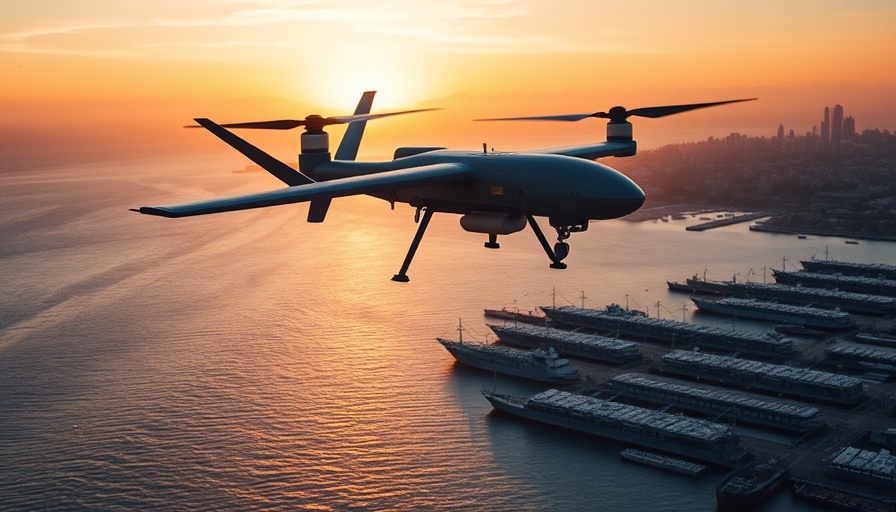
The Groundbreaking Milestone in Unmanned Technology
A significant leap in military technology was recently achieved by General Atomics Aeronautical Systems, Inc. (GA-ASI) in collaboration with AeroVironment (AV). In a historic test conducted from July 22-24 at the U.S. Army Yuma Proving Grounds, the two companies executed the first-ever air launch of a Switchblade 600 loitering munition from an MQ-9A unmanned aircraft system (UAS). This operation marks a pivotal advancement in the integration of unmanned systems, showcasing how combining different technologies can enhance capabilities on the battlefield.
How the Test Fueled Optimism for Future Operations
The successful launch from the Block 5 MQ-9A didn't just show off impressive technical prowess; it proved that the integration of air-launched munitions can profoundly change combat strategies. According to GA-ASI President David R. Alexander, “This cooperative effort showcased how combining different unmanned technologies could really provide value and effects to the warfighter.” The enhanced launch capabilities allow the MQ-9A to operate at greater distances from enemy systems, providing tactical advantages and broader operational flexibility in contested environments.
The Technical Achievement of System Integration
During the test, two types of Switchblade 600s were deployed: one equipped with an inert warhead and another with a high-explosive payload. This dual approach not only illustrated the breadth of possibilities with the Switchblade platform but also validated the effective transfer of control from MW-9A operators to ground controllers. It is a testament to how robust coordination between various unmanned systems can streamline missions and minimize risk to personnel.
The Broader Context: Why It Matters
This advancement is not merely a step forward in unmanned technology but a clear indication of shifting military tactics in a rapidly changing world. Growing concerns over global conflicts and evolving threats emphasize the need for innovative solutions. The use of loitering munitions, offering persistent surveillance and strike capability without risking human life, showcases the future of combat.
Looking Ahead: What This Means for Military Engagements
As military operations continue to adapt to modern warfare dynamics, the implications of this successful integration extend far beyond the test range. The ability to deploy advanced munitions from unmanned aerial systems not only enhances engagement strategies but also prepares military branches for future challenges in various combat scenarios. Observers predict that such innovations will redefine the contours of battlefield tactics, optimizing troop safety and operational efficacy.
Conclusion and Call to Action
The air launch of the Switchblade 600 from the MQ-9A is a notable milestone for drone technology and defense strategy. Such advancements underscore the importance of continued investment in unmanned systems and their operational uses in both training and combat environments. As this technology progresses, it becomes crucial for industry professionals, military planners, and technology enthusiasts alike to remain informed about developments and leverage these innovations for future engagements. Stay updated with the latest in military tech to ensure you're prepared for what’s next in this evolving landscape.
 Add Row
Add Row  Add
Add 




Write A Comment